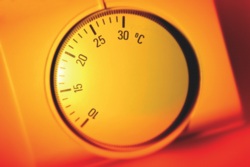Make BMS a reality that counts

The pressure on businesses to reduce costs and carbon emissions has never been greater. The financial downturn and subsequent age of austerity has forced many to take a serious look at how they control energy use in buildings. Lisa Wilkinson asks what can really be achieved.
During previous years of prosperity, focusing on eradicating waste and inefficient energy-management processes was believed to be a moral activity that added to the credentials of a company. However, as revenue is squeezed, excess costs must be managed. Equally, the political pressure on businesses to consider their environmental impact continues to grow, with an ever-increasing obligation to invest in energy management and reduction.
Legislation and targets drawn up by national governments and international authorities to fight climate change mean that even the most cynical must fall into line. However, like all business decisions, what is needed is a clear understanding of the facts on what savings can be made and the reality of how this is achievable with simple changes to building controls.
There is innovative technology available that can monitor and control energy-guzzling equipment. This equipment can also help staff understand why they should not be free to adjust equipment such as heating or air conditioning based on comfort rather than need.
For example we, as energy specialists, provide tools for automatic monitoring and targeting (aM&T) and building-management systems (BMS) for a wide range of clients. Our expertise lies in developing hardware and software that combines energy metering and analysis with building controls to help businesses reduce carbon emissions, save utilities expenditure, meet energy-reduction targets and comply with Government legislation.
Over a period of several years we have proved that using aM&T technology can save a company up to 15%. Those who upgrade the system to incorporate controls (a BMS) allowing for local or remote control and management of equipment performance and use (such as heating, ventilation, air conditioning and refrigeration [HVAC&R], AHUs, ovens and other energy intensive plant and machinery, as well as consumables such as water, air, gas and electricity) could save up to 30%.
We take an integrated, tailored approach that provides a start-to-finish service with full site survey, aM&T or BMS hardware and software. We also focus on engagement sessions to educate employees on the need to control energy consumption, as well as the benefits to them. For us it is crucial that a company’s entire workforce buys in to energy management from the beginning of the process.
It is easy to identify inefficiencies simply by walking around a building. When carrying out surveys, our people often find heating and air conditioning fighting each other, over-door heaters running constantly, doors left open and lighting left on overnight.
In addition, with room controllers (a small digital panel on the office wall) staff have more accessibility to ‘misuse’ air conditioning at too-high or low a temperature by over-riding controls — and all without being fully aware of the consequences.
One of our typical BMS control strategies will be based on the findings from a site survey and be pre-programmed with optimum settings for lighting, heating and cooling systems, as well as any other equipment that has been flagged up as a drain on the energy supply.

Then our web-based system enables the user to conveniently access the status of their assets and change control strategies to fine-tune energy-efficiency practices — all via the Internet. It can also provide reports and analysis in a variety of intuitive formats. Staff can be prevented from over-riding the presets, and alerts can be set up so that a text or e-mail is sent should the parameters be breached.
An example of this is the Hammonds Furniture store in Nuneaton. The peak consumption level dropped from around 20 kW to around 15 kW after the installation of a t-mac BMS. However, staff proceeded to manually change the temperature setting on their air-conditioning unit, resulting in overall energy consumption creeping back up to 20 kW during peak times, and higher still towards 25 kW as winter set in.
While this led to a surge in energy consumption, it did not increase the temperature in the store, thus demonstrating that the increase in temperature was a simple case of mind over matter.
Energy consumption fell by a quarter after the BMS went live in July, providing Hammonds with substantial cost savings, but when staff began to operate the air conditioning unit manually, we saw a huge increase in wasted energy.
We did not see any correlation between the increase in energy consumption and a rise in external temperature. During the period staff had over-ridden the air conditioning, their efforts were unfortunately in vain as despite the increase in a/c temperature setting, the overall store temperature did not increase.
While most businesses have a requirement for lighting, heating and cooling, products like t-mac can monitor and control all sorts of variables and, most importantly, help staff to maintain control when necessary. With an aM&T a business can target energy efficiency, but with a BMS owners can reduce it and should see a return on their investment after 12 to 18 months.
In my opinion, using a BMS that incorporates energy metering and management principles with remote controls is the way forward for businesses and makes saving costs and carbon a reality.
Lisa Wilkinson is a director of t-mac Technologies.







